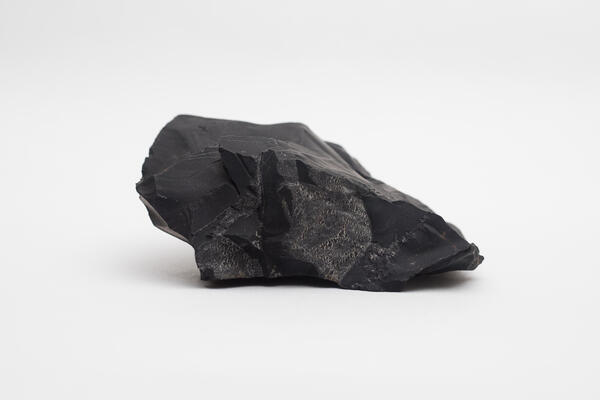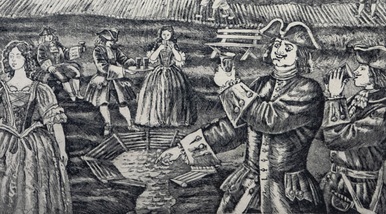The term “shungite” was coined in 1887, after the Zaonezhsky village of Shunga, near which large deposits of this Karelian mineral were discovered. Before that, the mineral was known as “Kizhi black soil”, “northern anthracite” and “slate stone”.
In 1908, the geologist Pyotr Borisov described several varieties of shungite, from brittle to dense thick-layer one. The last one turned out to be similar to a touchstone, a small stone such as Lydian stone, used for assaying samples of silver and gold. It has a finely grained surface on which soft metals, in particular gold, leave a visible trace. Jewelers examine this trace in order to establish the quality of precious metal. This property of shungite made it possible to stop importing the expensive Lydian mineral from Turkey.
The only shungite deposit in Russia is located in Karelia. Pure shungite is rarely found in nature, it occurs mainly in the form of thin (maximum 30-centimeter-wide) cracks. Most often, it is present as an impurity in shungite shales and dolomites, distributed throughout the Onega area.
Shungite rocks are used in various fields. Due to their high calorific value, they are used as metallurgical fuel. Another field of their application is construction. Polished black slabs with rare white veins do not fade over time. Shungite was used to decorate the interiors of St. Petersburg cathedrals as well as Moscow metro stations. Slate stone was also used in the decoration of the Marble Palace.
Slate slabs are used in the floor pattern of the Kazan Cathedral. Shungite was also used for black inlay for the mosaic floors of the grand staircase, Jupiter halls, Pompeian, Kolyvan vases and Roman decorative sculptures in the New Hermitage. You can see the same material in the decoration of St. Isaac’s Cathedral. The bust of the architect, who built the cathedral, Auguste Montferrand, combines all the rocks that were used in construction. The collar of the architect’s uniform is made of shungite.
In 1908, the geologist Pyotr Borisov described several varieties of shungite, from brittle to dense thick-layer one. The last one turned out to be similar to a touchstone, a small stone such as Lydian stone, used for assaying samples of silver and gold. It has a finely grained surface on which soft metals, in particular gold, leave a visible trace. Jewelers examine this trace in order to establish the quality of precious metal. This property of shungite made it possible to stop importing the expensive Lydian mineral from Turkey.
The only shungite deposit in Russia is located in Karelia. Pure shungite is rarely found in nature, it occurs mainly in the form of thin (maximum 30-centimeter-wide) cracks. Most often, it is present as an impurity in shungite shales and dolomites, distributed throughout the Onega area.
Shungite rocks are used in various fields. Due to their high calorific value, they are used as metallurgical fuel. Another field of their application is construction. Polished black slabs with rare white veins do not fade over time. Shungite was used to decorate the interiors of St. Petersburg cathedrals as well as Moscow metro stations. Slate stone was also used in the decoration of the Marble Palace.
Slate slabs are used in the floor pattern of the Kazan Cathedral. Shungite was also used for black inlay for the mosaic floors of the grand staircase, Jupiter halls, Pompeian, Kolyvan vases and Roman decorative sculptures in the New Hermitage. You can see the same material in the decoration of St. Isaac’s Cathedral. The bust of the architect, who built the cathedral, Auguste Montferrand, combines all the rocks that were used in construction. The collar of the architect’s uniform is made of shungite.



